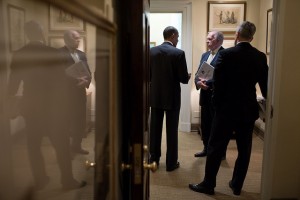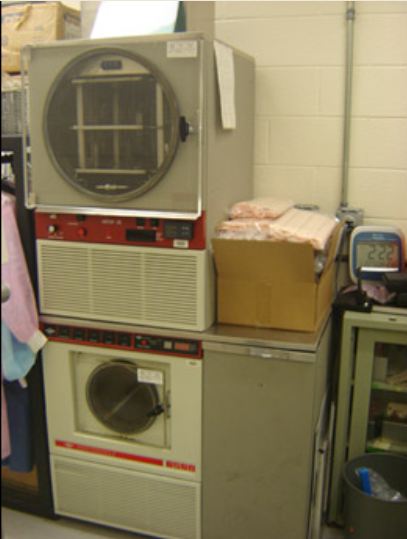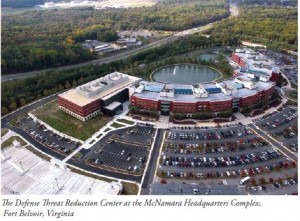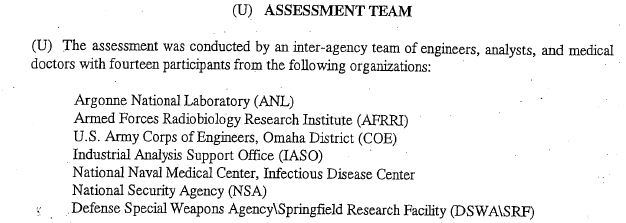Behold, John Brennan’s Scary Memo!
 I’ve been writing for a long time about the “Scary Memos” the government used to justify its dragnet.
I’ve been writing for a long time about the “Scary Memos” the government used to justify its dragnet.
As the Joint IG Report described, they started in tandem with George Bush’s illegal wiretap program, and were written before each 45-day reauthorization to argue the threat to the US was serious enough to dismiss any Fourth Amendment concerns that the President was wiretapping Americans domestically.
Jack Goldsmith relied on one for his May 6, 2004 memo reauthorizing some — but not all — of the dragnet.
Yesterday, James Clapper’s office released the Scary Memo included in the FISA Court application to authorize the Internet dragnet just two months later, on July 14, 2004.
ODNI calls it the Tenet Declaration — indeed it is signed by him (which, given that he left government on July 11, 2004 and that final FISC applications tend to be submitted days before their approval, may suggest signing this Scary Memo was among the very last things he did as CIA Director).
Yet the Memo would have been written by the Terrorist Threat Integration Center, then headed by John Brennan.
Much of the Scary Memo describes a “possible imminent threat” that DOJ plans to counter by,
seeking authority from this Court [redacted] to install and use pen register and trap and trace devices to support FBI investigations to identify [redacted], in the United States and abroad, by obtaining the metadata regarding their electronic communications.
There is no mention of NSA. There is no mention that the program operated without legal basis for the previous 2.5 years. And there’s a very curious redaction after “this Court;” perhaps CIA also made a show of having the President authorize it, so as to sustain a claim that all this could be conducted exclusively on Presidential authority?
After dropping mention of WMD — anthrax! fissile material! chemical weapons! — the Scary Memo admits it has no real details about this “possible imminent threat.”
[W]e have no specific information regarding the exact times, targets, or tactics for those planned attacks, we have gathered and continue to gather intelligence that leads us to believe that the next terrorist attack or attacks on US soil could be imminent.
[snip]
Reporting [redacted] does not provide specific information on the targets to be hit or methods to be used in the US attack or attacks.
But based on “detainee statements and [redacted] public statements since 9/11,” the Scary Memo lays out, CIA believes al Qaeda (curiously, sometimes they redact al Qaeda, sometimes they don’t) wants to target symbols of US power that would negatively impact the US economy and cause mass casualties and spread fear.
It took an “intelligence” agency to come up with that.
Based on that “intelligence,” it appears, but not on any solid evidence, CIA concludes that the Presidential conventions would make juicy targets for al Qaeda.
Attacks against or in the host cities for the Democratic and Republican Party conventions would be especially attractive to [redacted].
And because of that — because CIA’s “intelligence” has decided a terrorist group likes to launch attacks that cause terror and therefore must be targeting the Presidential conventions — the FBI (though of course it’s really the NSA) needs to hunt out “sleeper cells.”
Identifying and disrupting the North American-based cells involved in tactical planning offers the most direct path to stopping an attack or attacks against the US homeland. Numerous credible intelligence reports since 9/11 indicate [redacted] has “sleepers” in North America. We judge that these “sleepers” have been in North American, and the US in general, for much of the past two years. We base our judgment, in part, [redacted] as well as on information [redacted] that [redacted] had operatives here.
Before we get to what led CIA to suggest the US was targeted, step back and look at this intelligence for a moment. This report mentions detainee reporting twice. It redacts the name of what are probably detainees in several places. Indeed, several of the claims in this report appear to match those from the exactly contemporaneous document CIA did on Khalid Sheikh Mohammed to justify its torture program, thus must come from him.
Yet, over a year after KSM had been allegedly rendered completely cooperative via waterboarding, CIA still did not know the answer to a question that KSM was probably one of the only people alive who could answer.
We continue to investigate whether the August 2001 arrest of Zacarias Moussaoui may have accelerated the timetable for the 9/11 attacks because he knew of al-Qa’ida’s intention to use commercial aircraft as weapons.
Nevertheless, they believed KSM was being totally straight up and forthcoming.
Note, too, the CIA relied on claims of sleeper cells that were then two years old, dating back to the time they were torturing Abu Zubaydah, whom we know did give “intelligence” about sleeper cells.
To be sure, we know CIA’s claims of a “possible imminent threat” in the US do not derive exclusively from CIA’s earlier torture (though CIA had claimed, just months earlier, that their best intelligence came from that source for the Inspector General’s report).
Less than 3 weeks after this Scary Memo was written, we’d begin to see public notice of this “possible imminent threat,” when Tom Ridge raised the threat level on August 1, 2004 because of an election year plot, purportedly in response to the capture of Muhammad Naeem Noor Khan in Pakistan on July 13 (which could only have been included in “the Tenet declaration” if Khan were secretly arrested and flipped earlier, because Tenet was no longer CIA Director on July 13). But what little basis the election year plot had in any reality dated back to the December 2003 British arrest and beating of Khan’s cousin, Babar Ahmed, which would lead to both Khan’s eventual capture as well as the British surveillance of Dhiren Barot as early as June 10 and the latter’s premature arrest on August 3. KSM’s nephew, Musaad Aruchi, was also handed over by Pakistan to CIA on June 12; best as I know, he remains among those permanently disappeared in CIA’s torture program. This would also lead to a new round of torture memos reauthorizing everything that had been approved in the August 1, 2002 Bybee Memo plus some.
The claims the US was a target derive, based on the reporting in the NYT, from Dhiren Barot. Barot apparently did want to launch a terrorist attack. Both KSM and Hambali had identified Barot during interrogations in 2003, and he had scouted out attack sites in the US in 2000 and 2001. But his active plots in 2004 were all focused on the UK. In 2007 the Brits reduced his sentence because his plots weren’t really all that active or realistic.
Which is to say this election plot — the Scary Plot that drives the Scary Memo that provided the excuse for rolling out (or rather, giving judicial approval for continuing) an Internet dragnet that would one day encompass all Americans — arose in significant part from 2003 torture-influenced interrogations that led to the real world detention of men who had contemplated attacking the US in 2000, but by 2004 were aspirationally plotting to attack the UK, not the US, as well as men who may have been plotting in Pakistan but were not in the US.
That, plus vague references to claims that surely were torture derived, is what John Brennan appears to have laid out in his case for legally justifying a US dragnet.
You see, it’s actually John Brennan’s dragnet — it all goes back to his Scary Memo — and his role in it is presumably one of the reasons he doesn’t want us to know how many lies went into the CIA torture program.
Brennan’s Scary Memo provides yet more evidence how closely linked are torture and the surveillance of every American.





